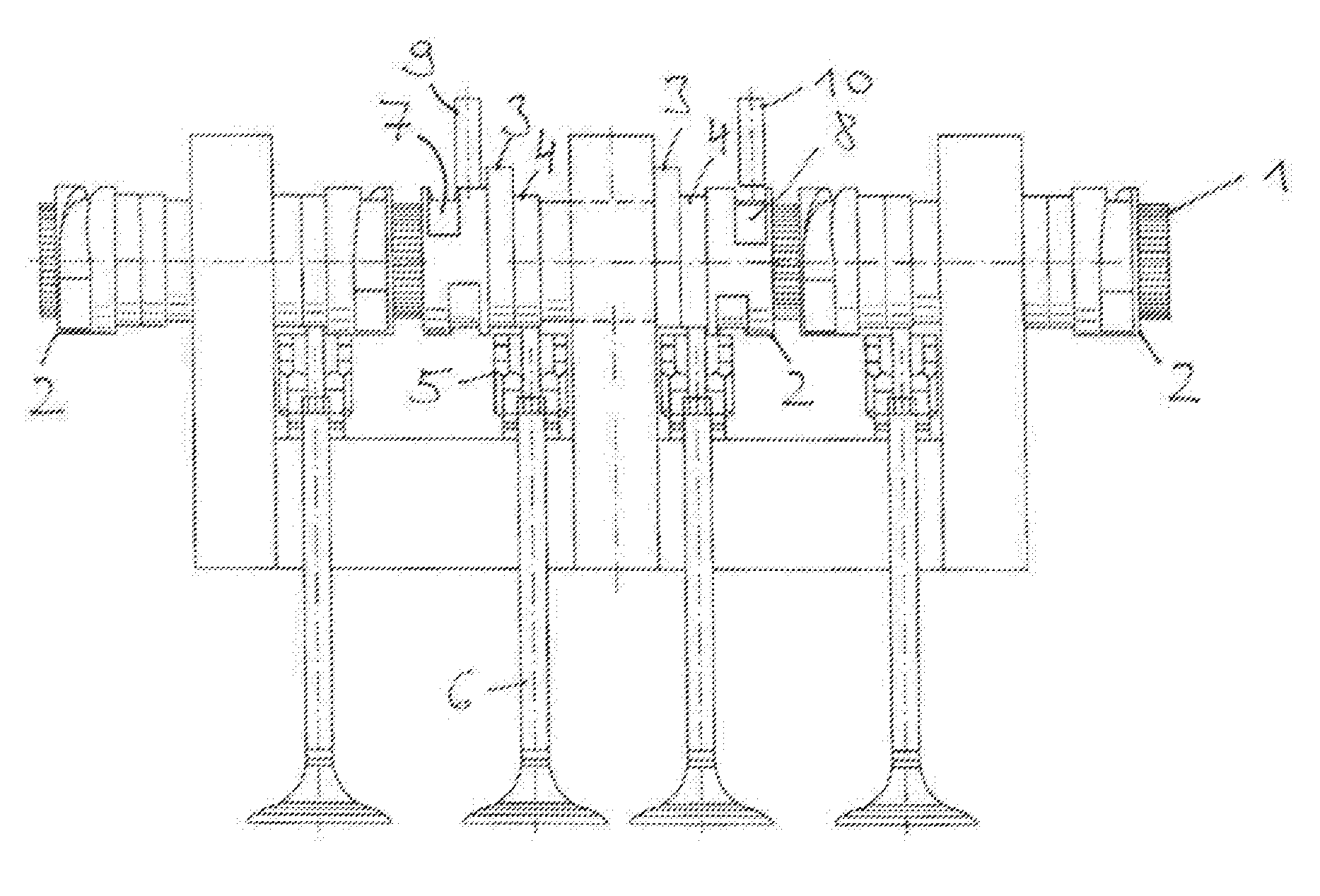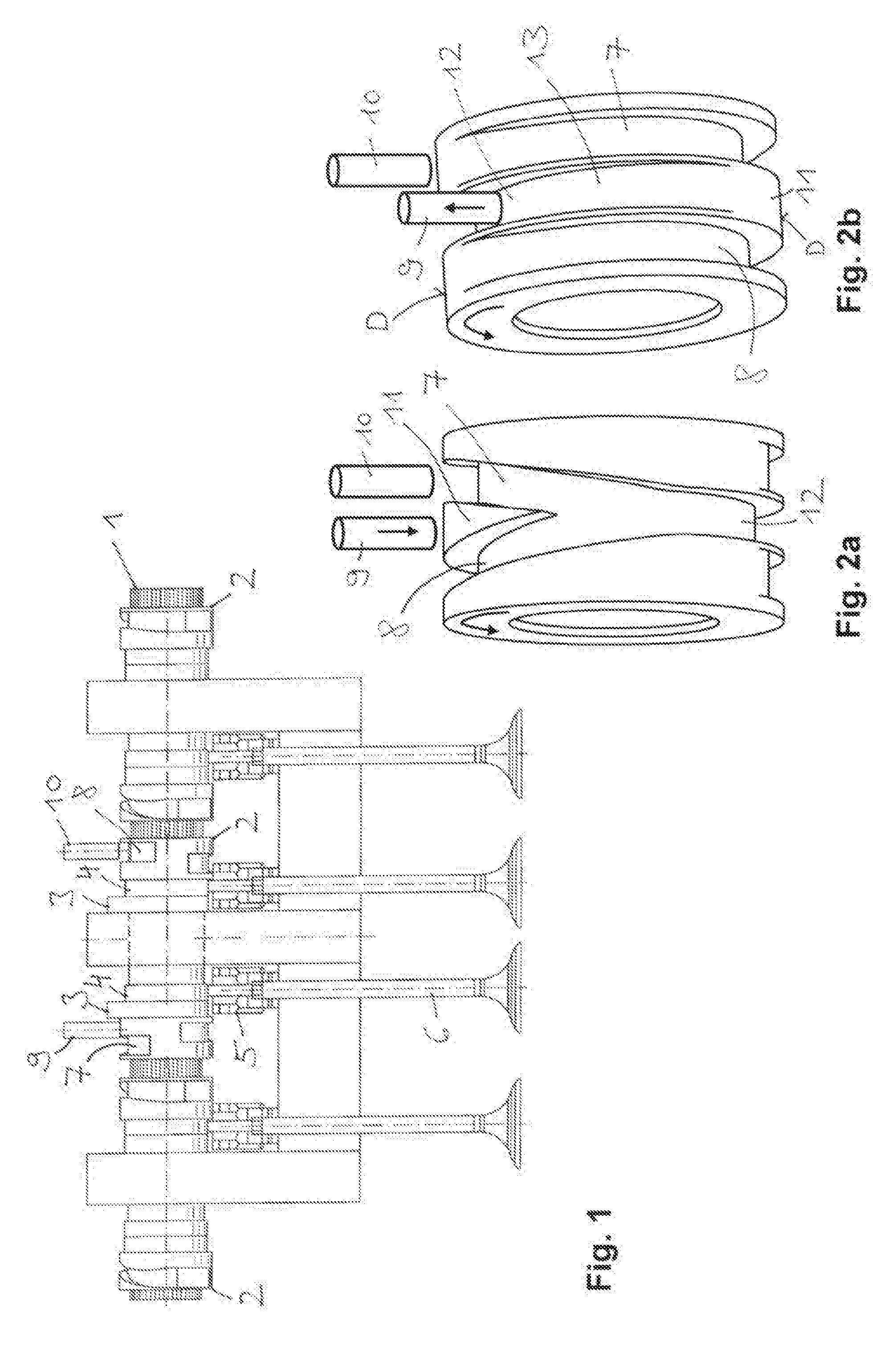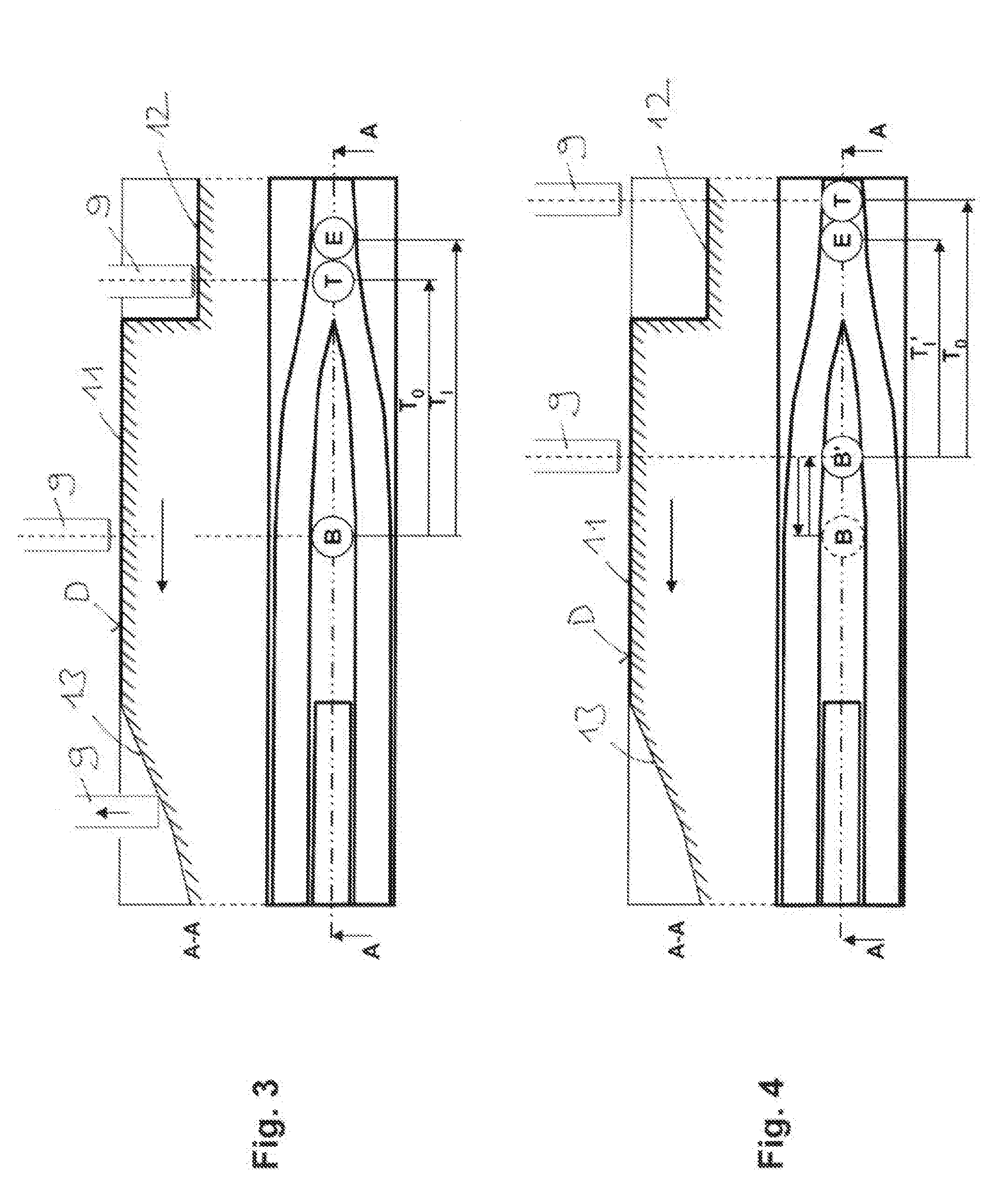Diagnostic method for a valve drive actuator
a technology of actuator and valve drive, which is applied in the direction of instrumentation, structural/machine measurement, machine parts testing, etc., can solve the problems of undesirable limited operating range, in particular the speed and temperature range, in which the sliding cam valve train could be switched over with sufficient precision, and achieves the effect of easy detection and processing, and the maximum operating range of the valve train permitted for switchover
- Summary
- Abstract
- Description
- Claims
- Application Information
AI Technical Summary
Benefits of technology
Problems solved by technology
Method used
Image
Examples
Embodiment Construction
[0024]FIG. 1 shows a variable-lift sliding cam valve train of an internal combustion engine, the basic operating principle of which may be summed up in that a conventionally rigid camshaft is replaced by an externally toothed carrier shaft 1 and a sliding cam 2 rotatably fixed and longitudinally movably situated thereon with the aid of an internal toothing. Each sliding cam has two sets of axially adjacent cams 3 and 4, the different lift courses of which are transmitted to gas exchange valves 6 with the aid of cam followers 5. The displacement of the sliding cam on the carrier shaft, which is necessary in order to activate the respective cam as a function of the operating point, takes place via helical displacement slots which are designed as left-hand and right-hand grooves 7 and 8 corresponding to the direction of displacement and into which a respective cylindrical actuator pin 9 and 10 of an electromagnetic actuator dips depending on the instantaneous position of the sliding ca...
PUM
 Login to View More
Login to View More Abstract
Description
Claims
Application Information
 Login to View More
Login to View More - R&D
- Intellectual Property
- Life Sciences
- Materials
- Tech Scout
- Unparalleled Data Quality
- Higher Quality Content
- 60% Fewer Hallucinations
Browse by: Latest US Patents, China's latest patents, Technical Efficacy Thesaurus, Application Domain, Technology Topic, Popular Technical Reports.
© 2025 PatSnap. All rights reserved.Legal|Privacy policy|Modern Slavery Act Transparency Statement|Sitemap|About US| Contact US: help@patsnap.com



